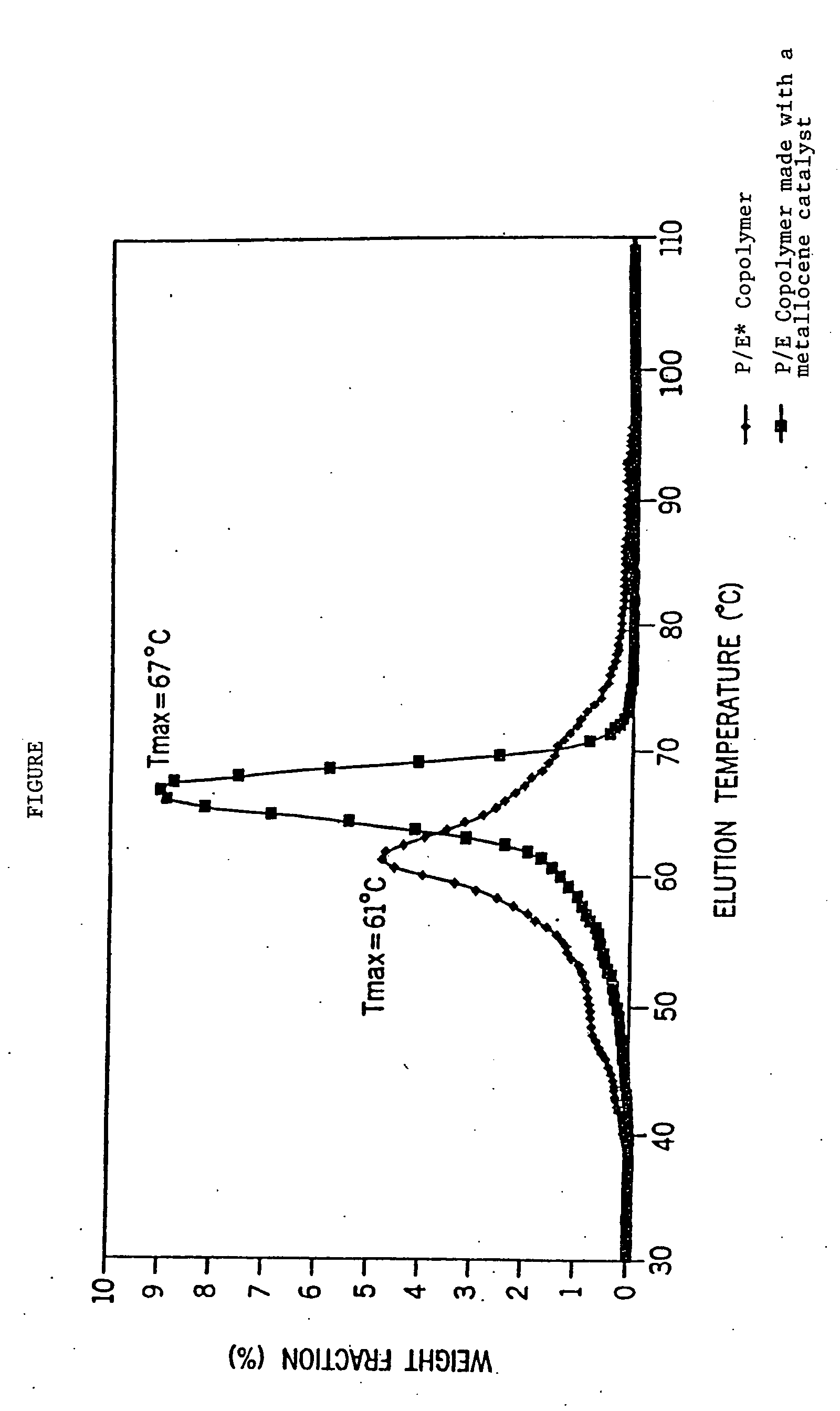Filled thermoplastic olefin composition
a technology of filling and olefin, which is applied in the direction of pigment paste, chemistry apparatus and processes, other chemical processes, etc., can solve the problem that the required level of fillers cannot be found in the composition of propylene-based polymers
- Summary
- Abstract
- Description
- Claims
- Application Information
AI Technical Summary
Benefits of technology
Problems solved by technology
Method used
Image
Examples
example 1
Table 1 reports the results of the various testing conducted on the polymers described above.
TABLE 1AUltimate ElongationUltimate Tensile% at Breakat Break (psi)MicroWhite 100, 15 micron0 wt %60 wt %80 wt %Ratio 0 wt % / 80 wt %0 wt %60 wt %80 wt %Ratio 0 wt % / 80 wt %67% P / E* S2, 33% P / E* S179769856871.3%2011109027813.8%67% P / E* S3, 33% P / E* S180968462276.9%146857916811.4%67% P / E* S3, 33% P / E* S283587773588.0%120264613211.0%P / E* S284774367379.5%210192929013.8%P / E* S38471047505.9%7683597910.3%H110-02N1142165.3%654819003986.1%DS6D82187632513.4%523910213747.1%
TABLE 1BFlexural Modulus (psi)Shore AMicroWhite 100, 15 micron0 wt %60 wt %80 wt %Ratio 0 wt % / 80 wt %0 wt %60 wt %80 wt %Ratio 0 wt % / 80 wt %67% P / E* S2, 33% P / E* S184201108024350289.2%82.585.787.7106.3%67% P / E* S3, 33% P / E* S1301656209850326.6%72.277.383.8116.1%67% P / E* S3, 33% P / E* S2165036105160312.7%62.275.283.3133.9%P / E* S26390706014060220.0%78.484.885.7109.3%P / E* S389017502220249.4%55.966.871.3127.5%H110-02N89.690.191.4102....
example 2
The following compositions were prepared on a Brabender™ mixer equipped with a 250-ml mixing bowl. In each case, the mixer was set to a mixing temperature of 150 C and mixing rate of 50 rpm and mixed for four minutes, lowering the rpm if necessary to maintain a melt temperature of less than 175 C. The compositions were then removed from the Brabender mixer, allowed to cool to room temperature, and granulated for use as described below.
Each formulation was extruded at 170 C into 0.020 inch-thick tape. Tensile bars (ASTM D638 type IV) were prepared from the tapes and were allowed to stand at room temperature for one week. Tensile strength and elongation were then measured using an Instron™ at a strain rate of 20 inches per minute according to ASTM D638.
Rheology of the compositions was evaluated on a commercially available dual barrel capillary rheometer at 170 C with a 16:1 L / D die, and data were corrected for entrance effects. Additionally, some of the specimens were tested for ...
PUM
| Property | Measurement | Unit |
|---|---|---|
| volume percent | aaaaa | aaaaa |
| molecular weight distribution | aaaaa | aaaaa |
| weight percent | aaaaa | aaaaa |
Abstract
Description
Claims
Application Information
 Login to View More
Login to View More - R&D
- Intellectual Property
- Life Sciences
- Materials
- Tech Scout
- Unparalleled Data Quality
- Higher Quality Content
- 60% Fewer Hallucinations
Browse by: Latest US Patents, China's latest patents, Technical Efficacy Thesaurus, Application Domain, Technology Topic, Popular Technical Reports.
© 2025 PatSnap. All rights reserved.Legal|Privacy policy|Modern Slavery Act Transparency Statement|Sitemap|About US| Contact US: help@patsnap.com



